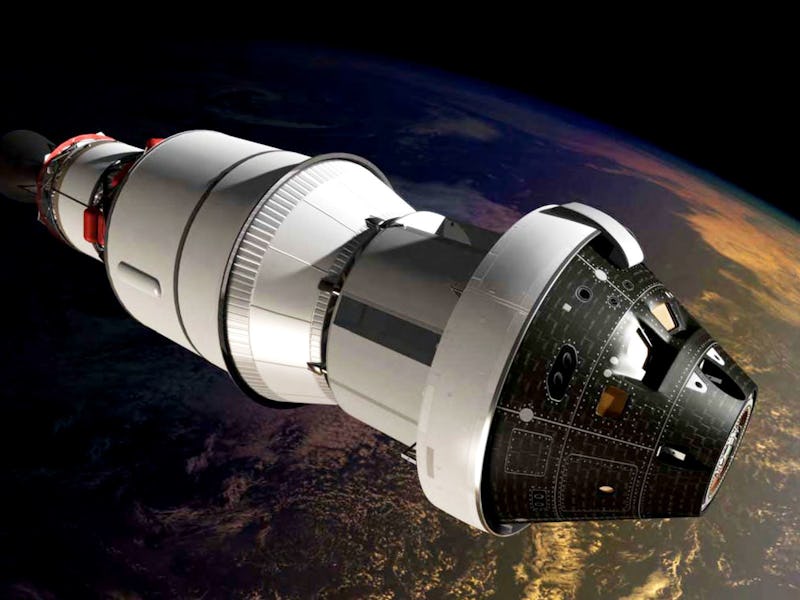When William Gerstenmaier discusses the agency’s “Journey to Mars,” he really stresses the “journey” part. It’s like a family vacation. Getting there is half the fun.
“I wouldn’t focus on the destination,” NASA’s associate administrator for human exploration and operations, said Thursday.
What Gerstenmaier means is that NASA’s mission to Mars is not exclusively focused on Mars. It’s about helping humans establish a permanent presence in deep space (like supply stations on asteroids). The comments came during the third-and-final day of the American Institute of Aeronautics And Astronautics’s annual Explore SPACE Forum in Long Beach, California.
Mars is merely one part of a broader vision to move us into exploring other worlds and moving habitable infrastructure into cislunar space — the space between Earth and the moon — Mars, and beyond.
“Right now we’re not ready to leave the Earthbound system,” Gerstenmaier said.
We need to stay close enough that we can travel back to Earth within days. But NASA and its partners are working on “an absolutely solid base” for progressing to allowing humans to work and live in space for years at a time — whether it’s in Earth’s orbit, on the moon or an asteroid, or an entirely new planet like Mars.
A 1969 NASA space concept, to be assembled on-orbit from spent Apollo program stages. The station was to rotate on its central-axis to produce artificial gravity. The majority of early space station concepts created artificial gravity one way or another in order to simulate a more natural or familiar environment for the health of the astronauts.
Naturally, this will require the development of many different new technologies. Gerstenmaier mentioned that “a large heavy-lifting launch capability” is perhaps the number one priority. If we can’t get a deep space crew capsule like Orion en route to the red planet, nothing else matters. Luckily, NASA is well on its way to getting the new Space Launch System tested and operational for a Mars mission.
And of course, there are other technological obstacles that need to be surpassed. Guy Beutelschies, the director of space exploration systems for Lockheed Martin, described his company’s work in designing the robotics systems we will be sending to Mars way before humans land on the surface. “We’re in the middle of it,” said Beutelschies. “We’ve been doing this for decades now.”
This involves making the most of the orbital satellites currently zipping above the red planet, and maximizing their data to pick out the best spots where we could set up a permanent Mars outpost. Then, we’ll need to start sending small packages containing building materials for necessary infrastructure, followed by bigger structures.
A “Mars base camp”
Robots will be used to build a “Mars base camp” where humans will live and work when they finally get there. The whole idea is to get to a point where robots and humans are working together and to help fulfill mission objectives and keep astronauts safe — especially in the context of time delays in communications
One of the most limiting factors to getting humans to travel to places far and wide are the physiological effects of long-term space duration. Michael Barratt, an astronaut whose flown on the space shuttle and is currently a part of NASA’s human exploration team, is working every day to learn more about how humans can better prepare to limit the negative symptoms caused by weightlessness.
For decades, the big enemy of long-term space duration was muscle and skeletal degradation. In this century, however, “we are now preserving bone and muscle …better than any time in history,” Barratt said.
The next biggest concern is how space affects vision through increased intracranial pressure, optic nerve enlargement, and structural changes in the retina. Barratt says about 90 percent of astronauts experience some degree of vision problems, and about 40-50 percent experience problems that are maladaptive.
Luckily, the International Space Station has been an essential tool in investigating these problems and allowing researchers to test out potential solutions (case in point: Scott Kelly’s “Year in Space” mission.)
An artist's rendering of a base on the Moon.
Ultimately, in order to maintain the march toward sending humans to deep space, Gerstenmaier says it is up to the space community to continue making the case for why space exploration matters.
“It’s not an unaffordable program,” he said. It’s the intangible benefits that are underreported, but the space community can still make a clear argument without having to rely on numbers about return on investments.
“How do you put a dollar value on the aspirational change that we made by going to the moon?” he asked — reminding the audience that Apollo 11 essentially created a paradigm shift that seemed to suggest anything was possible.
“We need to think about how these big picture, aspirational things are really worth,” he said.
